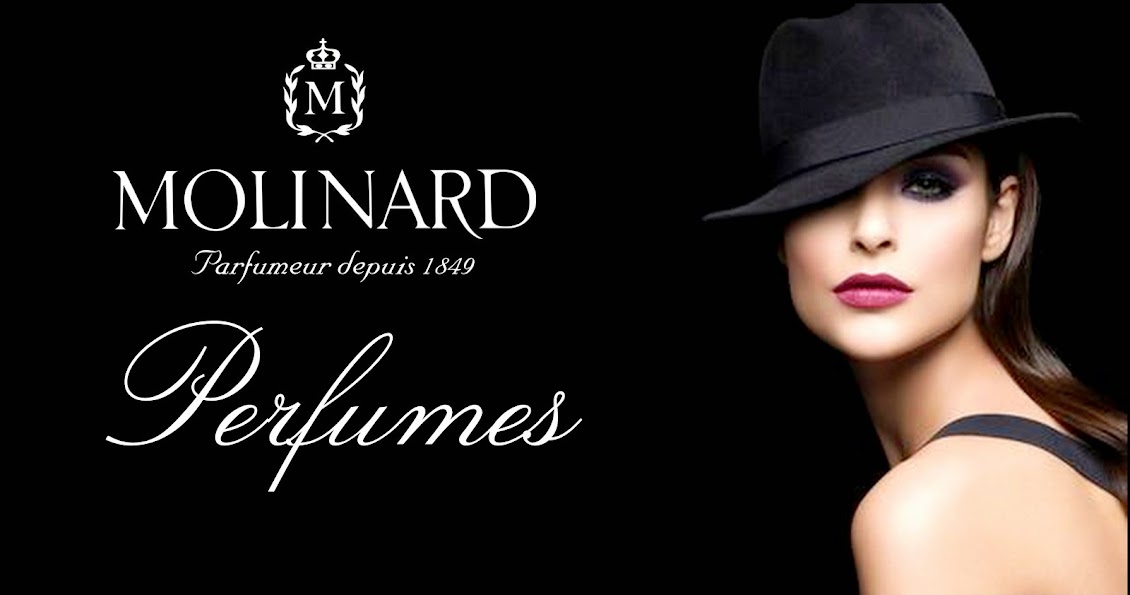Brief History:
In 1849, a chemist named Hyacinthe Molinard concocted excellent perfumed waters in the secrecy of his laboratory which he then sold from a small boutique in the center of town. The reputation of Molinard's perfumes grew and became established with the creation in 1921 of Habanita, a perfume that to the day remains a great classic.
In 1891, Queen Victoria stayed at Grasse, and bought Eaux de Cologne there.
In 1849, a chemist named Hyacinthe Molinard concocted excellent perfumed waters in the secrecy of his laboratory which he then sold from a small boutique in the center of town. The reputation of Molinard's perfumes grew and became established with the creation in 1921 of Habanita, a perfume that to the day remains a great classic.
The Maison Molinard was founded in 1849 in Grasse, Provence, in the south of France, cradle of the world's perfume industry. It was established by Hyacinthe Molinard (c1806-d1886) who operated the business as Molinard Jeune. It has remained an entirely family-run business to this day, and is also the oldest of its kind. At that time, Molinard produced floral waters and Eaux de Cologne, which it sold in its "little shop" in the town centre.
Hyacinthe Molinard was born on April 7, 1806 in Brignoles, France to Balthazar (1762-1821) and Catherine (nee Arnaud) Molinard (1771-1848). In 1833, he married Marie Francoise Pauline Isnard and together they had a daughter, Marie Anne Josephine in 1836. A son, Auguste Marius Molinard was born in 1833 but he only lived 15 days. Hyacinthe himself died in Grasse on December 11, 1886 at the age of 80 years old.
On October 3, 1858, Marie Anne Josephine married a perfumer from Grasse named Dominique Vian (1823-1899). In 1851, the perfumery business was simply named Molinard, but was known as Molinard et Vian in the 1862 volume of Annuaire et almanach du commerce, de l'industrie, where they were listed as "parfumeurs-distillateurs, art. for export."
Marie Anne and Dominique Vian had two children: Clotilde Adèle Marie Michaudel (1862-1925) and Emile Paulin Alphonse Vian (1866-1928). Marie Anne Vian died in 1922.
In 1860 Molinard began creating new fragrances: after "Jasmin" and "Rose" came "Mimosa" and "Violette" in elegant bottles made of Baccarat crystal.Hyacinthe Molinard was born on April 7, 1806 in Brignoles, France to Balthazar (1762-1821) and Catherine (nee Arnaud) Molinard (1771-1848). In 1833, he married Marie Francoise Pauline Isnard and together they had a daughter, Marie Anne Josephine in 1836. A son, Auguste Marius Molinard was born in 1833 but he only lived 15 days. Hyacinthe himself died in Grasse on December 11, 1886 at the age of 80 years old.
On October 3, 1858, Marie Anne Josephine married a perfumer from Grasse named Dominique Vian (1823-1899). In 1851, the perfumery business was simply named Molinard, but was known as Molinard et Vian in the 1862 volume of Annuaire et almanach du commerce, de l'industrie, where they were listed as "parfumeurs-distillateurs, art. for export."
Marie Anne and Dominique Vian had two children: Clotilde Adèle Marie Michaudel (1862-1925) and Emile Paulin Alphonse Vian (1866-1928). Marie Anne Vian died in 1922.
In 1891, Queen Victoria stayed at Grasse, and bought Eaux de Cologne there.
In 1900, the company moved into an old perfume factory, where the distillery structure was designed by Gustave Eiffel. Molinard is still there today. A typical Provençal showroom was set up, and its first customers were wealthy foreigners from England and Russia. They came to admire its magnificent collection of 17th and 18th century furniture, and buy Molinard eaux de Cologne together with all its floral fragrances.
In 1920, the company was owned by La Societe Bernard et Honorat (who owned three perfume factories) including Molinard, but reverted back to Molinard in 1938.
1921 was a momentous year, when Molinard launched two products that are still popular today. Firstly, the famous Habanita ? originally marketed to perfume cigarettes - which in 1924 became "the most tenacious perfume in the world", and secondly, Concréta, the first solid perfume: "natural flower wax used directly as a perfume".
Encouraged by its success, the company called on the celebrated glassmaker René Lalique to design and produce a number of magnificent bottles for Molinard, including "Iles d'Or" in 1930, "Madrigal" in 1930, and "Le baiser du faune" in 1932.
In 1920, the famous bottle-designer Viard created a number of outstanding designs for the company.
During the Roaring Twenties, the Baccarat crystal factory produced "7 diamants de la couronne", Xmas Bell", and "le Parfum des Parfums" Diamond for Molinard.
1935-1945: the Second World War was a difficult period. Molinard invented "The Prisoner's Parcel" to provide a touch of comfort to French soldiers.
1949: for Molinard's centenary, a superb brochure was printed by Draeger with lavish photos of the finest bottles by Lalique, Baccarat and other famous glassmakers of the time. Today this booklet is worth its weight in gold in bookstores?
Sometimes you will find labels that have the full name Molinard Jeune.
The perfumes of Molinard, beginning with the newest:
- (2000) Un Air d'Habanita
- (2000) Vanille Ambre
- (1999) Basilic Fleur d'Oranger
- (1999) Bulles de Fraicheur
- (1999) Camarel Pain d'Epice
- (1999) Chocolat Menthe
- (1999) Fleur de Figuier
- (1999) Orange Cafe
- (1999) Pomme Cannelle
- (1999) Rose Santal
- (1998) Vanille Fleurie
- (1998) Vanille Fraicheur
- (1998) Vanille Fruitee
- (1998) Vanille Marine
- (1998) Vanille Patchouli
- (1997) Ecoute-Moi
- (1996) Lavande (new)
- (1996) Molinard I
- (1996) Molinard Homme II
- (1996) Molinard Homme III
- (1996) Vaniteck
- (1995) Bois Precieux
- (1995) Musc
- (1994) Jasmin
- (1994) Mimosa
- (1994) Miss Habanita/Miss Molinard
- (1994) Muguet
- (1994) Rose
- (1994) Violette
- (1993) Ambre
- (1993) Citron Vert
- (1993) Clementine
- (1993) Mure
- (1993) Orange-Cannelle
- (1993) Patchouli
- (1993) Vanille
- (1992) Eau Fraiche
- (1989) Teck
- (1987) Campus
- (1984) Vetyver
- (1979) Les Iscles d'Or
- (1979) Molinard de Molinard
- (1977) Rafale
- (1959) Sketch
- (1955) Nirmala
- (1951) 55
- (1950) Lutchou
- (1949) Eau France
- (1948) Verveine
- (1948) Toute la Provence
- (1948) Fleurettes (reintroduced)
- (1946) Orval
- (1938) Soir D'Italie
- (1937) Bacchantes
- (1936) Violette du Roi
- (1935) Madrigal
- (1935) Fleurettes
- (1930) 1811
- (1929) Calendal
- (1929) Iles d'Or
- (1928) Les Parfum de Parfums (Molinard Jeune)
- (1928) Le Baisier du Faune
- (1926) Xmas Bells
- (1925) Lavande (original)
- (1925) Concreta
- (1924) Le Parisien
- (1924) Pao-Lou
- (1923) Oeillet Malmaison (Molinard Jeune)
- (1923) Figurines et Guirlandes
- (1923) Le Mimosa
- (1922) Acacia
- (1921) Habanita
- (1920) Aromates de Provence
- (1919) Ambre
- (1919) Chypre
- (1917) La Rose
- (1917) Les Violettes
- (1908) Fleurettes (Molinard Jeune)
- (1900) Orval
- Astoria



No comments:
Post a Comment